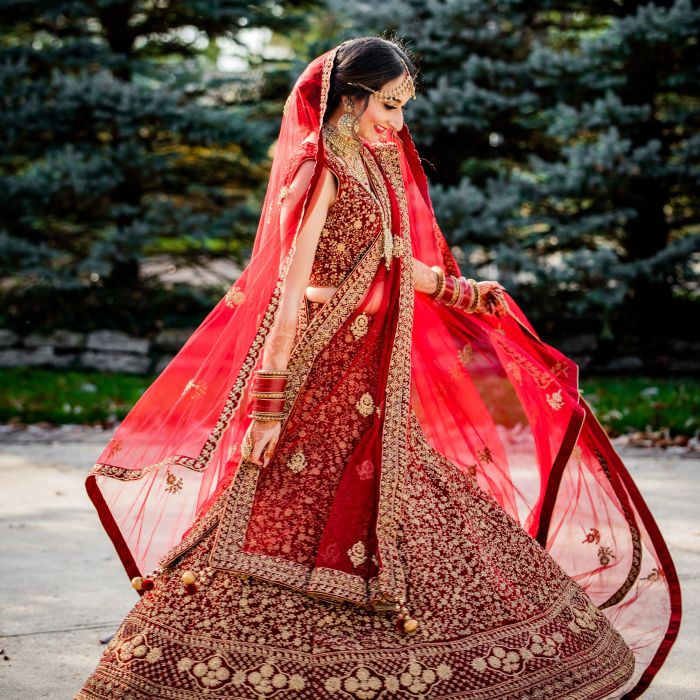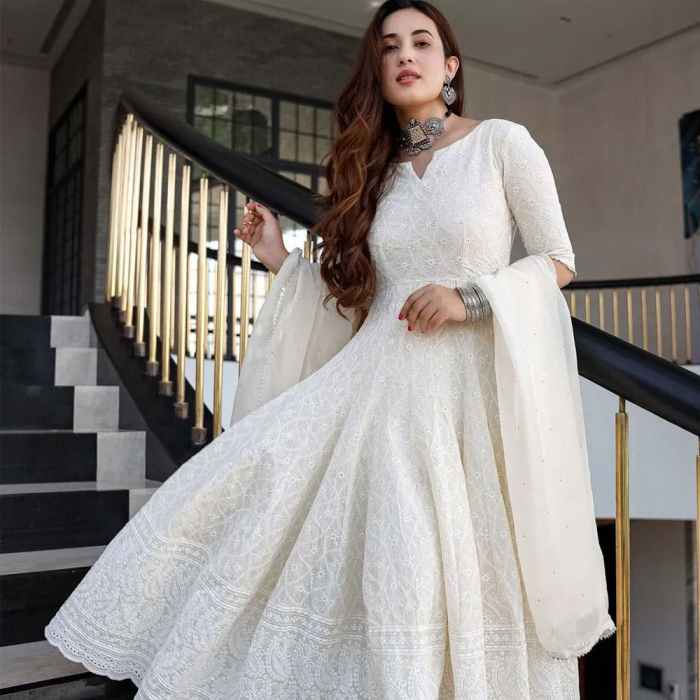A Deep Dive into Indian Wedding Dresses: Indian Wedding Dress Name
Indian wedding dress name – Indian weddings are renowned for their vibrant celebrations and, of course, the stunning attire. The wedding dress, a significant symbol of tradition and beauty, varies greatly across India’s diverse regions and cultures. This exploration delves into the fascinating world of Indian wedding dresses, examining their regional variations, historical significance, fabrics, jewelry, and modern interpretations.
Types of Indian Wedding Dresses, Indian wedding dress name

Source: brides.com
Indian wedding dresses showcase a breathtaking array of styles, reflecting the rich tapestry of India’s cultural heritage. The choice of dress often depends on the region, religion, and family traditions. Here’s a glimpse into some prominent styles.
| Dress Type | Region | Common Fabrics | Notable Features |
|---|---|---|---|
| Lehenga Choli | North, West, Central India | Silk, Brocade, Velvet, Net | Long, flowing skirt paired with a fitted choli (blouse) and often a dupatta (scarf) |
| Saree | Across India, variations by region | Silk, Cotton, Banarasi silk, Kanjeevaram silk | Draped garment, styles vary by region (e.g., Nivi style in South India, Bengali style in East India) |
| Ghagra Choli | Rajasthan, Gujarat | Silk, Brocade, Bandhani | Similar to Lehenga Choli, often more heavily embellished |
| Kanjeevaram Silk Saree | Tamil Nadu (South India) | Pure silk | Known for its intricate gold zari weaving, rich colors, and heavy drape |
| Paithani Saree | Maharashtra | Silk | Distinctive woven patterns, often featuring peacock motifs |
Historical Significance and Evolution:
The Lehenga Choli, for example, evolved from the earlier ghagra, a long skirt worn by women in various parts of India. Its current form, with a fitted choli, became popular during the Mughal era. The saree, arguably the most iconic Indian garment, boasts an ancient history, with evidence of its existence dating back centuries. Its draping styles have evolved over time, reflecting regional preferences and cultural influences.
The Kanjeevaram silk saree, originating from the Kanchipuram region of Tamil Nadu, is known for its intricate weaving techniques that have been passed down through generations of skilled artisans, creating a unique and timeless garment.
Regional Variations in Design and Ornamentation
Embroidery styles, motifs, and color palettes significantly vary across India’s diverse regions, each carrying cultural and symbolic weight. For instance, the intricate mirror work of Rajasthan contrasts sharply with the delicate zari embroidery of South India. The use of specific motifs, such as peacocks (representing beauty and grace) or mango (symbolizing fertility and abundance), also holds regional significance.
Colors too, carry deep meaning. Red, often associated with prosperity and good fortune, is a popular choice across many regions, while other colors like yellow, green, and blue hold varying significance in different states and communities.
Fabrics and Materials Used in Indian Wedding Dresses
A wide array of fabrics contributes to the luxurious feel and aesthetic appeal of Indian wedding dresses. Silk, in its many forms (Banarasi, Kanjeevaram, etc.), remains a favorite for its lustrous sheen and drape. Velvet adds opulence, while lighter fabrics like net and chiffon offer elegance and movement. The choice of fabric often depends on the climate, occasion, and regional preferences.
Different weaving techniques, such as brocade, zari, and bandhani, further enhance the beauty and intricacy of the garments.
- Silk: Luxurious, drapes well, suitable for various climates (with variations in weight)
- Velvet: Rich texture, ideal for colder climates, adds opulence
- Brocade: Heavy, intricate woven patterns, adds richness
- Net: Lightweight, sheer, often used for overlays
- Chiffon: Lightweight, flowy, perfect for summer weddings
- Cotton: Comfortable, breathable, suitable for warmer climates
Jewelry and Accessories that Complement Indian Wedding Dresses

Source: lbb.in
Indian bridal jewelry is an art form in itself, with intricate designs and symbolic meanings. From heavy necklaces and bangles to delicate earrings and maang tikas (forehead ornaments), each piece contributes to the overall bridal look. The types and arrangement of jewelry vary by region and community, reflecting cultural traditions and preferences.
For example, South Indian brides often adorn themselves with elaborate temple jewelry, while North Indian brides might favor heavier necklaces and chokers. The use of gold, precious stones, and pearls further enhances the richness and beauty of the jewelry.
Modern Interpretations of Traditional Indian Wedding Dresses
Contemporary Indian bridal fashion blends traditional aesthetics with modern sensibilities. Fusion styles, incorporating elements from different cultures, are increasingly popular. Modern silhouettes, such as A-line lehengas and sleek sarees, offer a contemporary twist on classic designs. Designers often experiment with modern techniques and materials, while preserving the essence of traditional Indian aesthetics.
For example, contemporary designers might use traditional embroidery techniques on modern silhouettes or incorporate unconventional colors while retaining the use of traditional fabrics. This creates a unique balance between heritage and contemporary trends.
The Role of Color in Indian Wedding Attire
Color choices in Indian wedding attire hold significant symbolic meaning. Red, often representing prosperity and good fortune, is a widely favored color. Other colors, such as yellow (representing joy), green (representing fertility), and blue (representing purity), also hold cultural significance and vary in importance across different regions and communities.
| Color | Meaning | Regional Association | Examples of Dress Styles |
|---|---|---|---|
| Red | Prosperity, good fortune | Widespread across India | Lehenga Choli, Saree |
| Yellow | Joy, optimism | Often associated with Bengali weddings | Saree, Ghagra Choli |
| Green | Fertility, new beginnings | Common in many regions | Lehenga Choli, Saree |
| Blue | Purity, serenity | Variations across regions | Saree, Anarkali suit |
Essential Questionnaire
What is the difference between a lehenga and a saree?
A lehenga is a three-piece ensemble consisting of a long skirt, a choli (blouse), and a dupatta (scarf). A saree is a single, long piece of fabric draped around the body in various styles.
What are some less common Indian wedding dress names?
Some less common but regionally significant names include the ghagra choli (Rajasthan), pavada (Kerala), and the banarasi saree (Varanasi).
How do I choose the right Indian wedding dress for my body type?
Consider your body shape and choose a style that accentuates your best features. Consult with a designer or stylist for personalized advice.
What is the average cost of an Indian wedding dress?
The cost varies greatly depending on the fabric, embellishments, and designer. Prices can range from a few hundred dollars to tens of thousands.
